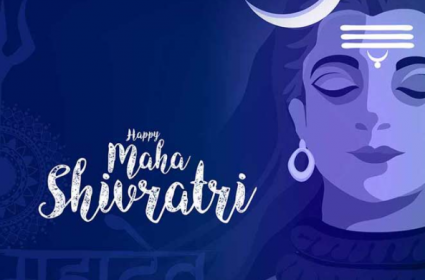Mahashivratri 2021 Significance, Lingam, And Bel Tree

The festival of Maha Shivaratri is celebrated all over the country, and in different places and ways in different states. The Maha Shivaratri means ‘Night of the Shiva’ and it is believed to be the day when Lord Shiva married Parvati.
There is a strict fast observed throughout the day. Throughout the night, the Shiva Lingam is worshipped by washing it every three hours with milk, curd, honey, rose water, etc with the holy chant of ‘Om Namah Shivaya’ chanted in the background with devotion and concentration.
The Maha Shivaratri festival is celebrated in Andhra Pradesh when pilgrims go all the way to Kalahasti and Srisailam to visit the temples there.
When is Mahashivratri?
Maha Shivaratri is celebrated on the 13th night and 14th day of every lunar month. The Shivaratri in the month of Falgun (Phalguna) - the last month of the Hindu calendar - is Maha Shivaratri which means "the Great Night of Shiva".
It takes place just before the arrival of spring, usually in February or March in the Western calendar. It is celebrated across India and is a holiday in most states. It is celebrated annually on the new moon day in the Hindu month of Magha.
Maha Shivaratri Significance
There are different versions of the origin of the festival. It is believed to be of the day Lord Shiva got married to Goddess Parvati.
According to another version, as per the lore, Shivaratri is celebrated on the day when Lord Shiva saved the world by drinking poison that emerged from the ocean during Samudra Manthan. This poison got stored in his throat thus making it blue which is the reason that Lord Shiva is also known as Neelkanth (blue throat).
The Story Of The Lingam & Its Importance
Shiva is worshiped in the form of a lingam (Sanskrit for "sign" or "distinguishing symbol") - a pillar often placed on a receptacle that represents female creative energy. Together it represents the union of organs and the totality of creation. The use of the lingam as a symbol for Shiva was introduced after the Aryan immigration into India, having been taken from aboriginal worship.
According to Hindu legend, Brahma and Vishnu were busy arguing over which among the three was the most powerful god. On hearing this, Shiva manifested in the form of a huge, flaming lingam. It was agreed with Brahma and Vishnu that whoever was first to find the end of the blazing column of fire would be considered the greatest of the Hindu gods. Vishnu, in the form of a boar, started looking for the bottom of the lingam, while Brahma, in the form of a swan, started looking for the top. After years of searching, neither had found an end, and they both had to acknowledge Shiva as the most powerful.
Flowers, incense, and other offerings are made, while all through the day the devotees chant the sacred Panchakshara mantra dedicated to Lord "Om Namah Shivaya".
Bel Tree Importance
It is believed that Lord Shiva is fond of the Bel tree, also known as the bilwa or bilva tree, and its leaves and fruit still play the main role in his worship.
Huge gatherings take place in temples all over India, though the biggest celebration is held in Ujjain, Madhya Pradesh, where Lord Shiva is believed to have stayed. Special celebrations are held at Shiva shrines in Tamil Nadu, Andhra Pradesh, and Uttar Pradesh.
All castes (divisions) of Hindu society participate in the worship of Shiva. The ceremonies surrounding Shivaratri are particularly popular with Hindu women, especially those wishing to become pregnant.




























